German authorities looked the other way as a right-wing terrorist cell went on a seven-year killing spree. Now they won’t look in the mirror.
Read: Foreign Policy Magazine
As featured on Longform
German authorities looked the other way as a right-wing terrorist cell went on a seven-year killing spree. Now they won’t look in the mirror.
Read: Foreign Policy Magazine
As featured on Longform
American evangelicals’ antigay gospel forced him to flee Uganda. Then Christians in California offered him a home. A refugee’s story, in words and pictures.
Read: The Atavist
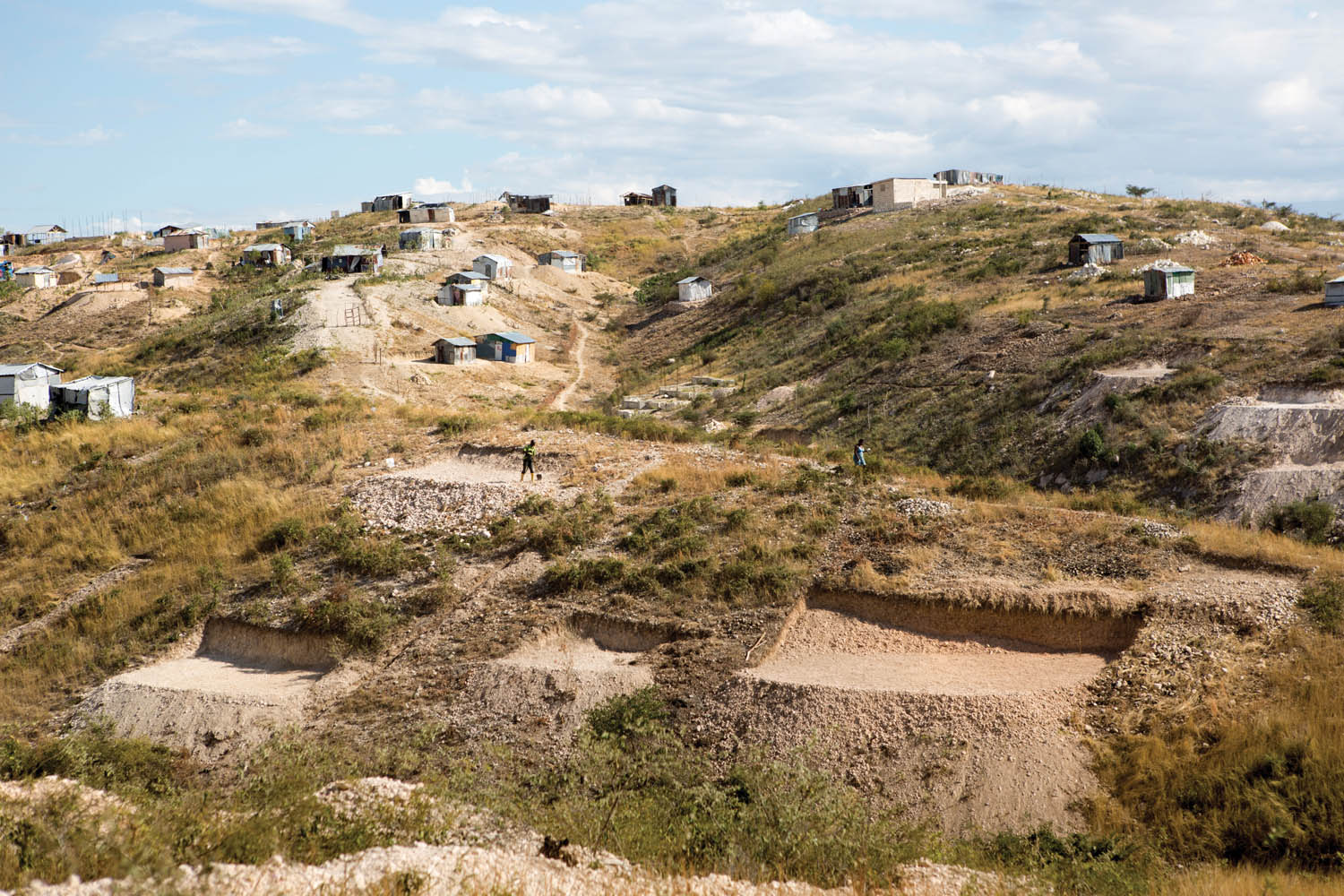
Allison Shelley
In the aftermath of disaster, Haitians ask what makes a city
Port-au-Prince was decimated when a magnitude 7.0 earthquake struck Haiti in January 2010. Within weeks, settlements began to appear on a barren landscape, shacks and tents spreading over dusty plains. They called it Canaan, the biblical promised land where Moses led the Israelites out of slavery–the land of milk and honey. “This Canaan has the same history,” one pastor, who was among the first to move there, told me. “This is our honey.”
But in Canaan, as in any city, people—the rich and the poor, the powerful and weak, the complacent and the desperate—were destined to get in one another’s way.
Read: VQR (Spring 2017)
As featured in Longreads
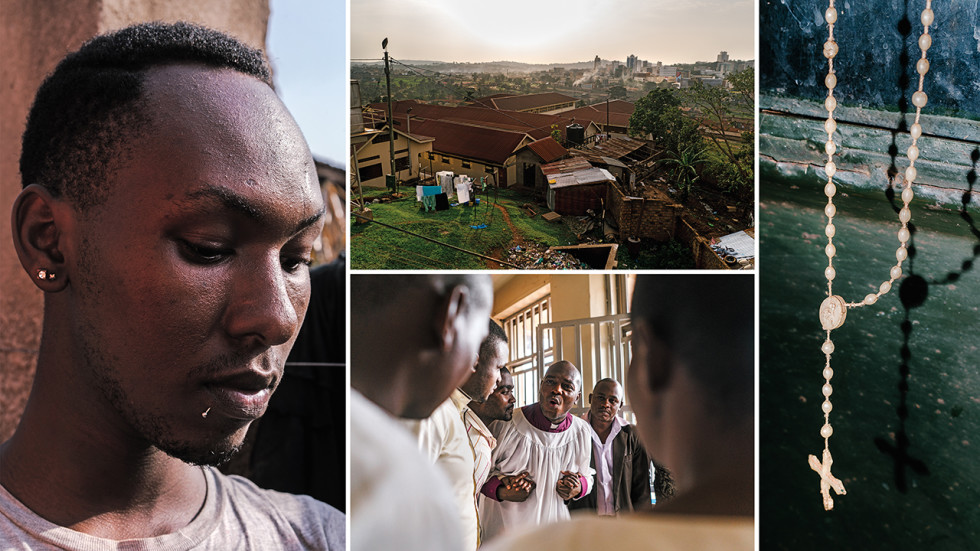
Photos by Jake Naughton

Inside the Fight for a Queer Country
Just a few years ago, Kampala was a nightmare for LGBTQ Ugandans, some of whom were beaten and stripped in the streets, chased by angry mobs or jailed.
But you wouldn’t guess that from the relaxed atmosphere at Cayenne on Kampala’s north side. Few people seem to notice the transgender woman dancing by the pool, and if they do, they don’t seem to care. Javan belongs to a generation of queer Ugandans barely old enough to remember when the antigay fervor first erupted here, in 2009.
Kenya has become a safe haven for scores of refugees fleeing war and famine in neighboring countries. But that sense of sanctuary doesn’t always stand true if you’re young, vulnerable and gay. In secret hideaways and temporary homes, LGBT refugees are being forced yet again to hide their true selves.
In Kenya’s Baringo County, police reservists are tasked with carrying out the work that Kenya’s real police and armed forces have been unable or unwilling to do: fighting off armed bandits who are terrorizing parts of central Kenya as they steal livestock and shoot anyone who gets in their way.
Read: The Guardian

Christopher Furlong/Getty
In a nation known for minerals, a controversial crop is on the rise.
Before he started growing weed, Koti spent his days digging holes and tunnels, mining for morsels of gold. He would smoke weed — or bangias he calls it — to overcome his fear of the darkness that he faced underground. As a teen, he saw a tunnel collapse, trapping five fellow miners — only one was rescued. “It’s dangerous,” says Koti, of the illegal minerals trade that many eastern Congolese families depend on. “People were dying.”
The tragedy frightened him, but with no other source of income, he was back at the mine the next day. Then, in 2007, a foreign mining company kicked Koti and the other small-time miners off the land. With no other job, he bought cannabis seeds from a neighbor, planted them and, six months later, harvested a crop of cannabis that measured in the kilos. “I had no other job,” says Koti, who asked that his real name be withheld out of fear of authorities. “So I decided to start growing marijuana.”
The Democratic Republic of Congo, Africa’s second-largest nation by area, is known for nefarious trade in copper, coltan, cobalt, tin and other minerals. But now, tens of thousands of Congolese like Koti are setting their sights on a different sort of illegal resource: cannabis. The United Nations estimates that Africa produces 10,500 metric tons of cannabis — a fourth of all the marijuana in the world. Between 27 million and 53 million Africans use the drug, making up about one-fourth of all weed users worldwide.
But while cannabis farming comes without the physical fears that accompany mining, it carries its own share of risks, wrapped in politics from across the Atlantic. Decades of U.S. and international pressure are a key reason why cannabis cultivation is illegal in Congo. In 1961, the U.S. voted in favor of the U.N. Single Convention on Narcotic Drugs, which added marijuana to the list of drugs that were banned internationally. The way to solve America’s drug “problem” was by pinching off the global supply, or so the thinking went.
Farmers can’t receive international aid to grow an illegal crop. It also leaves them vulnerable to harassment from corrupt police officials.
 The penalization of cannabis in Congo is endorsed by the U.S. at a time when many states are decriminalizing the drug at home. In Afghanistan, the U.S. has funded “alternative livelihood” programs to shift Afghan farmers away from cannabis. And in 2005, the U.S. vetoed an international attempt to “reschedule” cannabis as a less dangerous substance — a move that could have opened the doors to deregulation.
The penalization of cannabis in Congo is endorsed by the U.S. at a time when many states are decriminalizing the drug at home. In Afghanistan, the U.S. has funded “alternative livelihood” programs to shift Afghan farmers away from cannabis. And in 2005, the U.S. vetoed an international attempt to “reschedule” cannabis as a less dangerous substance — a move that could have opened the doors to deregulation.
Read the full feature at OZY.
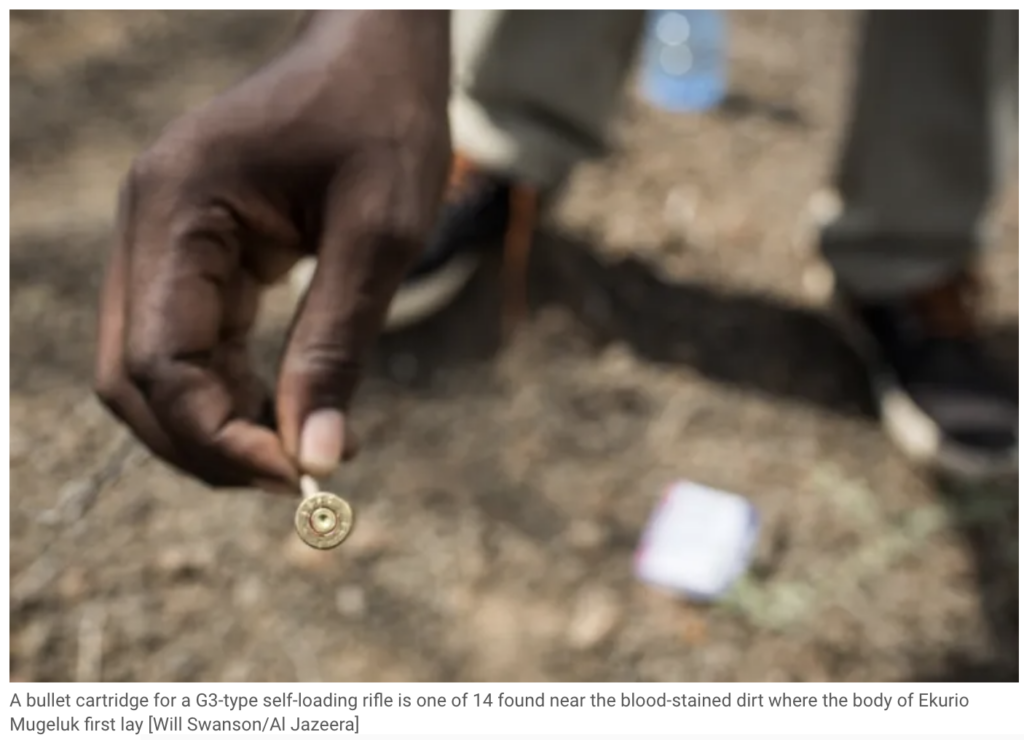 On the trail of police who stormed a village, burned down homes, stole livestock – and murdered an 80-year-old man.
On the trail of police who stormed a village, burned down homes, stole livestock – and murdered an 80-year-old man.
One May afternoon along a dirt road in a remote swath of Kenya’s Baringo County lay the remains of an elderly man. Wild animals had eaten his flesh, torn off some of his limbs, and dragged his body – now mostly bones. A purple shawl and a yellow football jersey clung to the skeleton.
 Witnesses say nine days earlier, several truckloads of police officers raided their village, burning their huts and stealing their goats. Officers then threw rocks at the elderly man who had tried to escape. They loaded him onto a truck, dumped him by the side of the road and shot him.
Witnesses say nine days earlier, several truckloads of police officers raided their village, burning their huts and stealing their goats. Officers then threw rocks at the elderly man who had tried to escape. They loaded him onto a truck, dumped him by the side of the road and shot him.
Reporting by Al Jazeera corroborates witnesses’ accounts that on May 9, Kenyan police murdered 80-year-old Ekurio Mugeluk and left his body to the wild.
Read the full investigation at Al Jazeera. Reported with Anthony Langat and Will Swanson.
Cornelius said the drive to Arabal would take an hour, but it’s been more like three. Already a full day’s journey from Nairobi, we chanced that by dark we could reach the Arabal river and make it back to the town of Marigat to sleep. But now the sun is inching westward and our car is running out of gas.
This isn’t a place you want to be stranded for the night. Baringo County is in the midst of a war over livestock. A severe drought has forced Pokot herders to drive their cows and goats from the dry flatlands up into the beautiful mountains above Lake Baringo in search of grass. But this land is inhabited by Tugen, and the Tugen are struggling to feed their own livestock as it is.
In central Kenya, grass and vegetation can be a matter of life and death, and not just for the animals. Pastoralists depend upon milk and meat for their livelihoods. Deprived of that income, entire communities can become food insecure. For many families, livestock are their only assets: they have no bank accounts, no land to farm.
Combine those stakes with the fact that experts believe there are 530,000 to 680,000 guns in circulation among civilians in Kenya. Guns have long been traded across Kenya’s porous border with Somalia, but some have recently been traced to Uganda and South Sudan. Most herders who carry them do so for self-defense—to protect their animals from raiders. But others use them to raid.
Some of the Pokot who have crossed into the administrative region of Arabal this year fall into the latter category. Since the drought began late last year, there have been dozens of shootouts between Tugen, Pokot, and the police. Thousands of heads of livestock have been stolen, though just how many thousands is anyone’s guess.
Survivors of these shootouts speak of the Pokot as if they were immune to bullets, as if they were sharpshooters who never missed, as if their ammunition were infinite. But survivors are hard to find.
Read the feature story at Roads & Kingdoms. Reported with Anthony Langat, photos by Will Swanson.
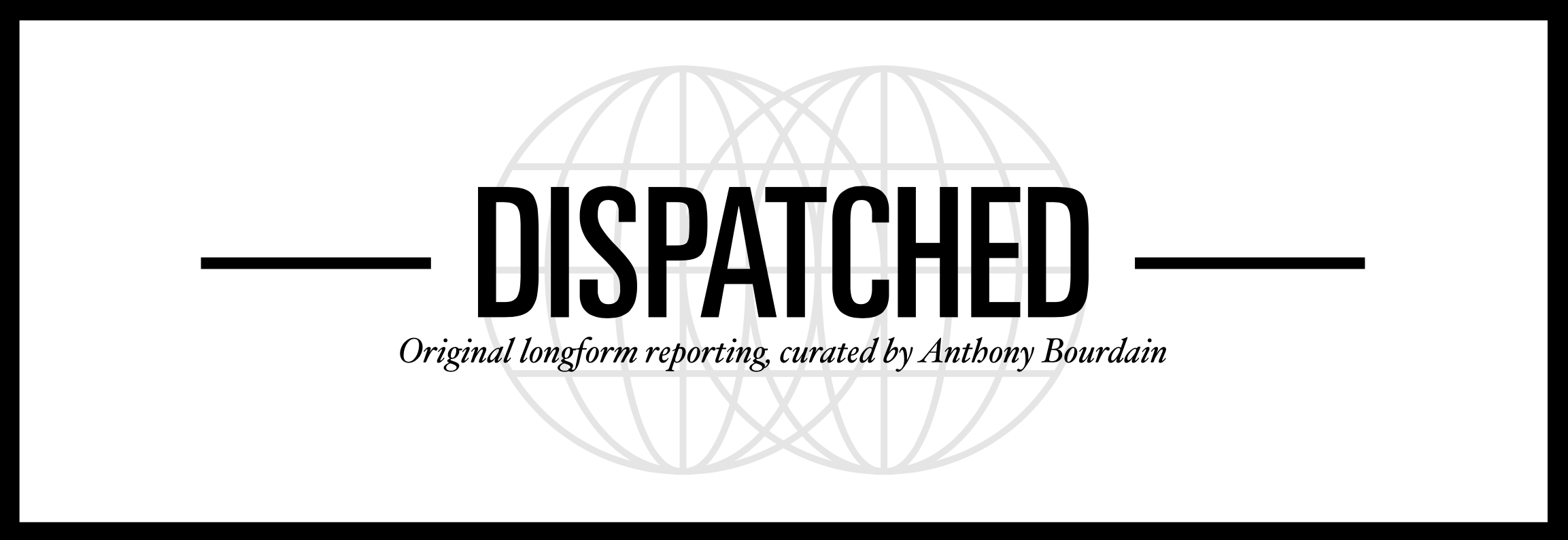
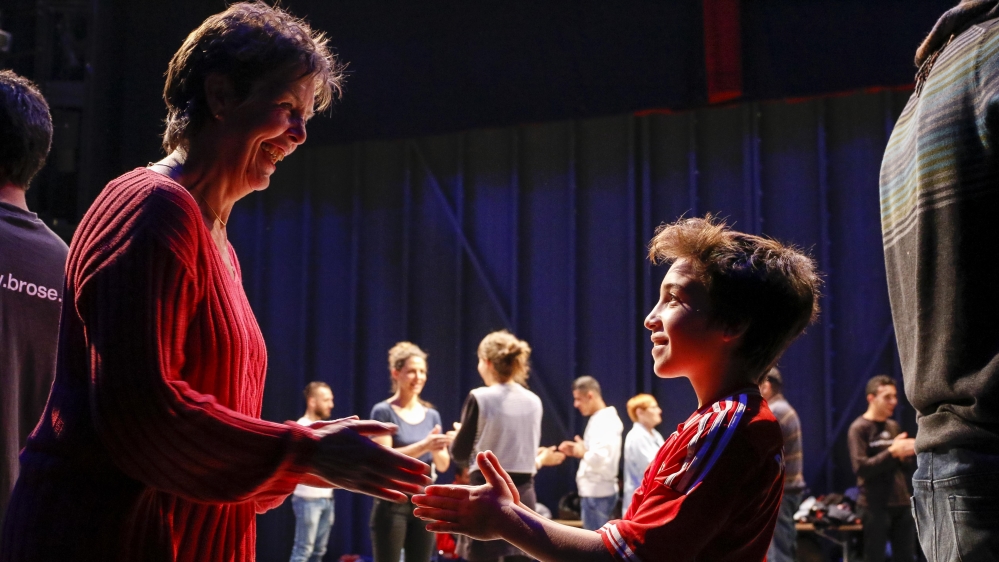
Refugee youth partake in the international cafe’s theatre activities and perform skits based on their own experiences [Daniel Koch/Staatsschauspiel Dresden]
Here, immigrants tell stories about their homelands and laugh with German volunteers about cultural differences. Graffiti covers the walls, a sign on one wall reads, “Refugees welcome. Bring your families.”
They do. Children play table football, while teenagers – mostly boys – lounge on couches.
But this particular space, known as the “international cafe”, rests in an uncanny location.
Dresden, the capital of Saxony, is a stronghold for Germany’s anti-immigrant politics. Each week, thousands of supporters of the right-wing, anti-Muslim, anti-refugee movement PEGIDA gather to demonstrate against Germany’s liberal policies towards asylum seekers.
They chant that refugees should “go home” and denounce what they see as the Islamisation of Germany. Refugees often take care to avoid central Dresden on Monday nights out of fear they’ll become targets of the protesters’ angry speech, or worse.
Read the full story at Al Jazeera. This is the final story in a 7-part series.
Laikipia is located in central Kenya in the heart of the Great Rift Valley. It is home to one of East Africa’s largest concentrations of wildlife, from elephants to rhinos and buffalo to packs of wild dogs. An estimated 86,000 tourists visit each year to explore parts of the 32 vast conservancies and ranches that occupy a third of Laikipia County. Many adore Laikipia because it is so remote, situated far from the more popular safari parks that flood with tourists during the dry seasons.
Over the past seven months, however, the peace for which Laikipia is known has given way to a war over grass. A severe drought that began in the fall of 2016 caused nearly 3 million people in northern Kenya to need emergency food assistance. The lack of vegetation caused herdsmen to drive thousands of cows, goats, and sheep southward from nearby counties to where, quite literally, the grass is greener—on private conservancies and ranches.
“Pretty much every wild animal we have has been shot by these herders,” says Sean Outram, manager of Sosian Ranch. Packs of wild dogs—the most endangered large carnivores in East Africa—have been all but wiped out. Dozens of Laikipia’s estimated 5,000 elephants have died in the conflict, as have hundreds of buffalos. Fifteen elephants and at least 12 giraffes were killed on Sosian alone. “Anything that moves has been shot—some of it for the skins, some of it for trophy. Some just because they wanted to shoot it,” says Outram.
There may have been something deeper to the herders’ resentment. Many of Laikipia’s conservancies are owned and managed by white people—Kenyan descendants of British colonialists or immigrants from Europe and other African countries. People like Tristan Voorspuy. “The tribesmen who murdered Tristan Voorspuy saw not a farmer whose life had been spent in Africa and who provided employment for scores of local people, but instead just a rich, white interloper on a horse who challenged them on land they demand to claim as their own,” wrote Max Hastings, a former safari tourist of Voorspuy’s, in the Daily Mail. “Unless its government shows the will and means to restore peace to Laikipia, which means expelling this murderous throng of invaders by force of arms, the nation’s future stands at risk, and its priceless wild heritage faces the prospect of near-extinction.”
Read the feature story at Outside Magazine.

Jacob Kushner for Al Jazeera
A lawyer and his family fled death threats in Pakistan and came to Germany only to face terrorism. Now, they’re being forced to go home.
Salzhemmendorf, Germany – Late one summer night in this quiet village, a Molotov cocktail came flying through the window of the apartment where a Zimbabwean refugee and her three young children lived.
In the apartment next door, an asylum seeker from Pakistan who calls himself Mr Khan heard nothing. He was sitting at his computer with his headphones on, watching videos on the internet with news from Karachi. He and his family had fled Pakistan for Europe in 2012 after some of his colleagues – lawyers who were Shia Muslim – had been murdered by Sunni Islamic extremists.
When he heard a loud banging on his apartment door, he opened it to find a police officer, who ushered him and his family outside. The building smelled of smoke, and Khan surveyed the wreckage: The Molotov cocktail had destroyed the bedroom it was thrown into. It was the room in which the woman’s 11-year-old son usually slept on a mattress on the floor. By chance, he was sleeping in his mother’s room that night, which may have saved his life.
Outside, “I heard the sound of the fire brigade,” Khan said. “If they did not come, this whole building could have been finished.”
After Khan’s building was attacked by xenophobic Germans, he wondered whether Germany would accept their asylum applications, and allow them to stay.
“Tomorrow, I don’t know what will happen,” Khan said. “Maybe Germany will say, ‘Out!'”
In fact, it did.
Read the full story at Al Jazeera. This is the 6th article in a 7-part series.

Photo by Journalistenwatch, flikr.
Last week I wrote about an attack on a refugee housing complex in Altenburg, Germany, in which two baby carriages were set aflame. It occurred just two days after members of a right-wing, anti-immigrant movement called PEGIDA marched through the town. That piece grappled with the question of how Germany—a nation with an unparalleled record of confronting its past—has found itself once again home to a small but active collection of xenophobes willing to resort to hate speech or even violence against newly arrived refugees.
But what is Germany doing to protect asylum seekers from right-wing terrorism? In 2015, the newspaper Die Zeit counted 220 violent attacks against refugees but only four convictions. Last year, the number of attacks (including ones that did not result in violence) exploded to 3,500.
How to stop this proliferation? Read the full piece at Columbia Global Reports.

Photo by Arnaud333, Wikimedia Commons.
On December 7, 2015, two baby carriages were set on fire at an apartment complex housing refugees in the pristine Thuringia town of Altenburg. Ten refugees, including two infants, suffered from smoke inhalation. The attack came two days after right-wing protesters marched through the town carrying signs that read, “Please continue your flight. There’s nowhere to live here.”
“On the ground floor there was a woman living with her baby who had to jump out without shoes,” district administrator Michaele Sojka told me when I met her last June. “Everyone was really shocked that something like that could happen in our city.
Two men were arrested, and six months later one of them was found guilty of arson. The judge said the man had “acted on xenophobic motives.” The other was handed a fine for repeating Nazi slogans. “One of them must have been drunk that night,” Brit Krostewitz, a volunteer with the Altenburg Network for Integration, told me. “They are just stupid Nazis.” Most Germans know the type.
This is Germany, a country whose leaders just 80 years ago tried to deport and then exterminate all non-Christians and “outsiders.” A country so ashamed of its xenophobic past that to display any hint of nationalism, such as to wave a German flag during a soccer match, remained taboo. Germany, a liberal European state that goes so far as to limit speech—by criminalizing Holocaust denial—least anyone attempt to forget or manipulate that torrid past.
And yet, Germany has recently become a breeding ground for small pockets of xenophobic citizens to commit hate crimes and terrorism against foreigners.
Read the full story at Columbia Global Reports. This is the first part of a short series on refugees in Germany.

Illustration by Jawahir Al-Naimi/Al Jazeera
In Freital, Abu Hamid and his fellow refugees were attacked by right-wing Germans, who could be convicted of terrorism.
Freital, Germany – On Halloween night, 2015, in this town outside the Saxon capital of Dresden, Abu Hamid went into the kitchen to grab some food when he noticed sparks of light outside the window. Sensing danger, he and his roommates rushed out of the kitchen just as a booming explosion shook the house, shattering the windows and sending pieces of glass into one man’s face.
“After that, we thought someone would come inside the home and attack us,” Abu Hamid said. “One of my friends, he took a knife.”
The explosion was caused by illegal fireworks, as they later discovered. It appeared someone had placed them on the windowsill that night to target those inside. For months beforehand, local police had failed to see a connection between a series of right-wing protests against refugee housing shelters and the bombing of a car belonging to a left-wing politician in Freital. Just one month before Abu Hamid’s apartment was attacked, another, almost identical firework attack had been launched on the house of some Eritrean refugees in the town.
It wasn’t until news outlets as far away as Berlin began pressuring authorities to take action that Germany’s federal prosecutor took up the case. In a dramatic SWAT-style raid, federal and state police arrested five suspects believed to have formed an organised anti-refugee militia.
Read the full story at Al Jazeera. This is the fifth story in a seven-part series.